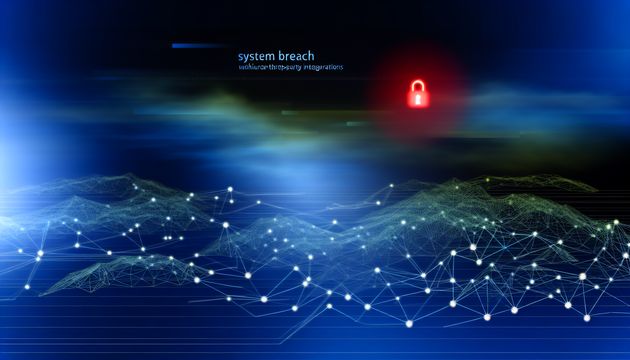
Ransomware Breach at Port of Seattle: An In-Depth Analysis
The Port of Seattle, a critical hub for both air and sea transportation, faced a severe ransomware attack on August 24, 2024, orchestrated by the Rhysida ransomware group. This incident disrupted essential services at the Seattle-Tacoma International Airport, affecting everything from baggage handling to passenger information systems. The attack highlighted the vulnerabilities in critical infrastructure and the growing threat posed by ransomware-as-a-service (RaaS) operations. The Port’s response involved isolating systems and collaborating with federal agencies to mitigate the impact, showcasing the importance of robust cybersecurity measures (TechCrunch, The Cyber Express).
Ransomware Breach at Port of Seattle: An In-Depth Analysis
Incident Overview
The Port of Seattle, which operates the Seattle-Tacoma International Airport, experienced a significant ransomware attack on August 24, 2024. The attack was attributed to the Rhysida ransomware group, a relatively new but rapidly growing ransomware-as-a-service (RaaS) operation. This incident resulted in major disruptions to critical systems and services, including baggage handling, ticketing, Wi-Fi, check-in kiosks, and passenger information displays (TechCrunch).
Attack Timeline and Immediate Response
The attack was detected on August 24, 2024, when the Port identified system outages consistent with a cyberattack. Port staff quickly isolated critical systems to prevent further compromise and worked around the clock to ensure the safety and security of their operations (The Cyber Express). Despite these efforts, the attackers managed to encrypt some data, and the Port’s website, internal portals, and mobile app remained non-operational for an extended period (Cybersecurity Dive).
Ransom Demand and Data Breach
The Rhysida group demanded a ransom of 100 bitcoin, equivalent to approximately $6 million at the time, in exchange for the stolen data. The hackers posted a copy of eight files on their dark web site as proof of the breach (AP News). The Port of Seattle refused to pay the ransom, citing that it would not be a prudent use of taxpayer money (SecureWorld).
The breach compromised the personal data of approximately 90,000 individuals, including names, dates of birth, Social Security numbers, and other government ID numbers. Around 71,000 of those affected were residents of Washington state (KOMO News).
Impact on Operations
The ransomware attack caused significant operational disruptions at the Seattle-Tacoma International Airport. Several critical systems were affected, including baggage handling, check-in kiosks, and passenger display boards. Despite these challenges, most flights departed and arrived as scheduled, and cruise ship operations were not impacted (Cybersecurity Dive).
The Port’s recovery efforts focused on restoring affected systems and ensuring the safety and security of their operations. However, the recovery process was prolonged, with some systems remaining offline for weeks after the attack (SecureWorld).
Lessons Learned and Future Preparedness
The Port of Seattle’s experience highlights the vulnerabilities of critical infrastructure to ransomware attacks and the importance of robust cybersecurity measures. The incident underscores the need for organizations to effectively cordon off their critical assets and implement comprehensive incident response plans (Cybersecurity Dive).
In response to the attack, the Port has taken steps to enhance its cybersecurity posture, including upgrading its security infrastructure and notifying affected individuals about the data breach (Seattle Times). The Port’s refusal to pay the ransom also sends a strong message against succumbing to cybercriminals’ demands, emphasizing the importance of resilience and recovery in the face of cyber threats (The Seattle Medium).
Federal and Third-Party Involvement
The FBI has launched a criminal investigation into the ransomware attack, working closely with the Port of Seattle to identify and apprehend the perpetrators (AP News). Additionally, the Port collaborated with third-party cybersecurity experts and federal partners to safely restore and test their systems (Port of Seattle).
This collaboration underscores the importance of public-private partnerships in addressing cybersecurity threats and highlights the interconnected nature of critical infrastructure, which spans IT systems and multimodal transportation connected to economic hubs (Cybersecurity Dive).
Broader Implications for Critical Infrastructure
The ransomware attack on the Port of Seattle serves as a stark reminder of the vulnerabilities faced by critical infrastructure sectors, such as transportation, healthcare, and utilities. The incident highlights the need for organizations to adopt a proactive approach to cybersecurity, focusing on prevention, detection, and response to minimize the impact of cyber threats (Cybersecurity Dive).
Organizations must prioritize the protection of their digital assets and cyber-physical systems, ensuring that they are resilient to cyberattacks and capable of recovering swiftly from incidents. The Port of Seattle’s experience demonstrates the importance of continuous improvement in cybersecurity practices and the need for ongoing collaboration between public and private entities to safeguard critical infrastructure (The Cyber Express).
Emerging Technologies and Future Threats
As technology evolves, so do the tactics of cybercriminals. Emerging technologies like AI and IoT can both aid in defense and be exploited in attacks. AI can enhance threat detection and response times, but it can also be used by attackers to automate and scale their operations. IoT devices, if not properly secured, can serve as entry points for cyberattacks, making it crucial for organizations to integrate these technologies with robust security measures.
Final Thoughts
The ransomware attack on the Port of Seattle serves as a stark reminder of the vulnerabilities inherent in critical infrastructure sectors. The incident underscores the necessity for organizations to adopt proactive cybersecurity strategies, focusing on prevention, detection, and swift response to cyber threats. The Port’s refusal to pay the ransom and its efforts to enhance cybersecurity measures highlight the importance of resilience and recovery in the face of cyber threats. This case also emphasizes the value of public-private partnerships in addressing cybersecurity challenges, as demonstrated by the collaboration with federal agencies and third-party experts (Cybersecurity Dive, The Seattle Medium).
References
- TechCrunch. (2024, September 15). Port of Seattle shares ransomware attack details. https://techcrunch.com/2024/09/15/port-of-seattle-shares-ransomware-attack-details/
- The Cyber Express. (2024). Port of Seattle ransomware attack data breach. https://thecyberexpress.com/port-of-seattle-ransomware-attack-data-breach/
- Cybersecurity Dive. (2024). Seattle port ransomware attack. https://www.cybersecuritydive.com/news/seattle-port-ransomware-attack/727098/
- AP News. (2024). Seattle airport cyberattack ransomware Rhysida. https://apnews.com/article/seattle-airport-cyberattack-ransomware-rhysida-95cd980a9f45112f0fdce488233eec9c
- SecureWorld. (2024). Port of Seattle ransomware. https://www.secureworld.io/industry-news/port-of-seattle-ransomware
- KOMO News. (2024). Seattle cyberattack exposes data of 90,000 people. https://komonews.com/news/local/seattle-cyberattack-exposes-data-of-90000-people-raises-security-concerns
- Seattle Times. (2024). Sea-Tac airport begins alerting victims in last year’s cyberattack. https://www.seattletimes.com/seattle-news/sea-tac-airport-begins-alerting-victims-in-last-years-cyberattack/
- The Seattle Medium. (2024). Port of Seattle cybersecurity threat. https://seattlemedium.com/port-of-seattle-cybersecurity-threat/
- Port of Seattle. (2024). Port cyberattack archive. https://www.portseattle.org/news/port-cyberattack-archive



